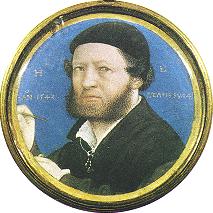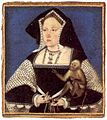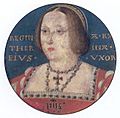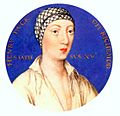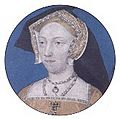Lucas Horenbout facts for kids
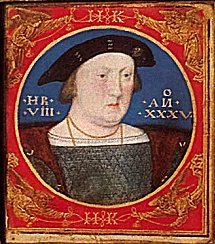
Lucas Horenbout (born around 1490-1495, died 1544) was a talented artist from Flanders (modern-day Belgium). He moved to England in the 1520s. There, he became the "King's Painter" for King Henry VIII. He worked for the King from 1525 until he passed away.
Lucas Horenbout learned to paint illuminated manuscripts. These were beautiful books with painted decorations. His father, Gerard Horenbout, was also a famous artist in this field. Lucas is known for starting the special English style of painting tiny portraits called portrait miniatures. Some people also think he was the artist known as the "Cast Shadow Workshop." This workshop created royal portraits on wooden panels in the 1520s and 1530s.
About Lucas Horenbout's Life
Lucas Horenbout was born in Ghent, a city in Flanders. He learned to paint from his father, Gerard Horenbout. In 1512, Lucas became a master in the local Guild of Saint Luke, an artist's group. His father, Gerard, was a very important artist who painted for Margaret of Austria. She was the ruler of the Netherlands from 1515 to about 1522. Margaret was also related to Catherine of Aragon, who was King Henry VIII's wife when the Horenbout family came to England.
Lucas Horenbout came to England sometime in the 1520s. His sister, Susannah Hornebolt, and his father might have come with him or later. Some people think they moved to England because the King wanted to start a new workshop for illuminated manuscripts in London. Around 1525, Lucas married Margaret Holsewyther. She was also an artist whose family came from Germany.
Lucas's father, Gerard, was first recorded in England in 1528. He later went back to Europe and died in Ghent by 1540. Lucas's sister, Susanna, was also a painter of illuminated manuscripts. Records show she was married to John Palmer in 1529 and was living in England.
Lucas Horenbout is officially recorded in England from September 1525. That's when he first got paid by the King as a "pictor maker" (a painter). By 1531, he was called the "King's Painter." This job was made permanent for his whole life in June 1534. He also became a "denizen," which meant he was almost a naturalized citizen of England.
Lucas Horenbout was paid very well. He earned about sixty-two pounds and ten shillings each year. This was a very large amount of money at the time. For example, Hans Holbein the Younger, another famous court painter for Henry VIII, earned thirty pounds a year. Lucas was given a home in Charing Cross in London. He was also allowed to hire four foreign assistants. Lucas died in London in 1544. He was buried at Saint Martin in the Fields church. He left behind his wife, Margaret, and a daughter named Jacquemine.
Lucas Horenbout's Artworks
Lucas Horenbout is seen as the person who started the English style of portrait miniature painting. This type of painting began suddenly when he arrived in England. Before him, there were very few tiny portraits like these in Europe. Some people believe that Lucas Horenbout even taught Hans Holbein the Younger how to paint these small pictures. Holbein was another important artist at Henry VIII's court.
Today, about twenty-three tiny portraits are believed to have been painted by Lucas Horenbout. All but one of these are portraits of members of the English royal family or other royal families. He painted at least four of King Henry VIII's queens. Many of his dated works are from the 1520s.
One of Lucas Horenbout's best works is a miniature portrait of Holbein, painted in 1543. He copied Holbein's face from a self-portrait drawing by Holbein himself. There are two versions of this miniature that are thought to be by Horenbout. The better one is kept at the Wallace Collection museum. This portrait might have been painted to remember Holbein, as both artists died within six months of each other.
Lucas Horenbout also worked on other types of art. He probably painted on wooden panels, made woodcuts, and created decorations for royal parties. However, most of these works have not survived. We do have some of his beautiful painted decorations on important royal documents, like charters. Some experts also believe he or his sister created the detailed paintings in a special book at Hatfield House.
Gallery
-
Catherine of Aragon, 1525–26
-
Henry FitzRoy, 1st Duke of Richmond and Somerset, Henry VIII's illegitimate son, 1534-5
-
Jane Seymour, 1536–37
See also


